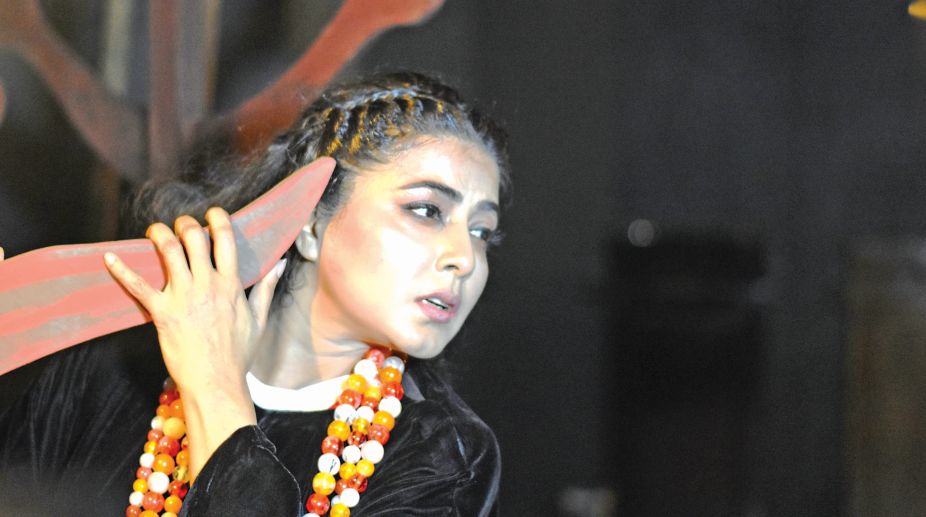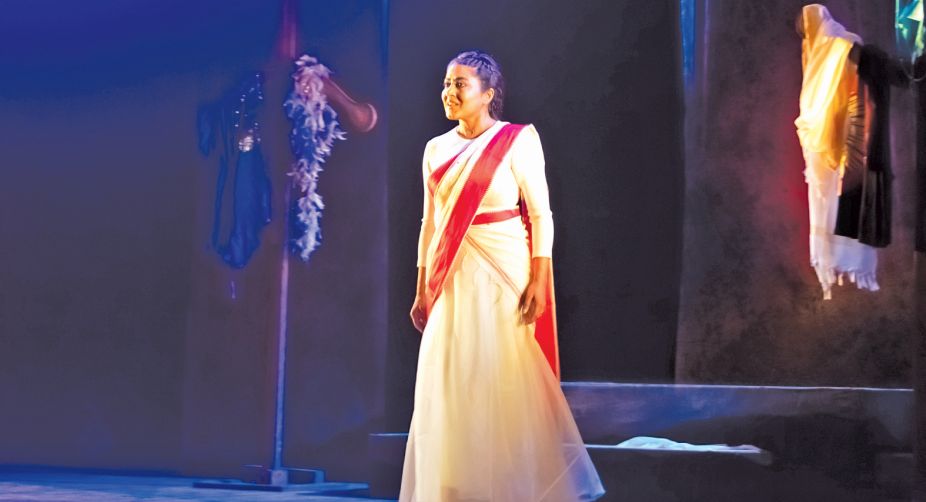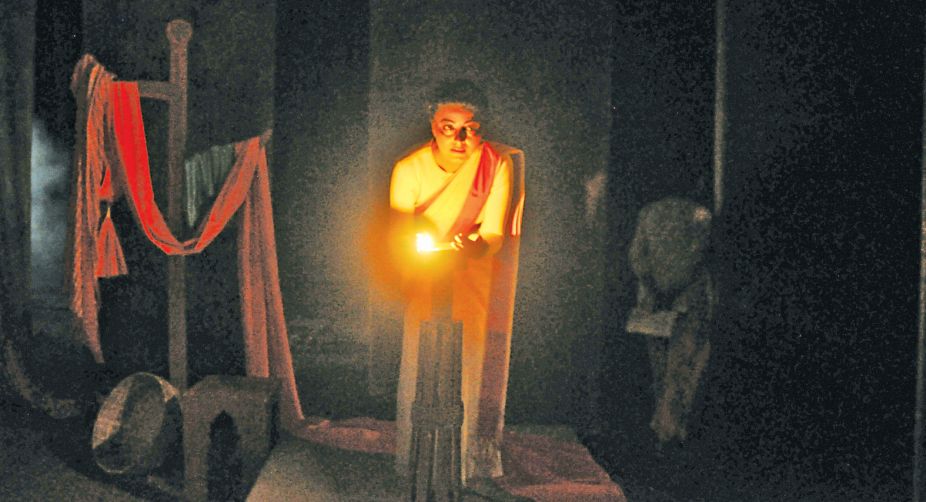Festival to promote theatre in Bengal
The Bengal Theatre Rejuvenation Festival was inaugurated on 4 November with the intention of promoting Bengali theatre.
Rangini repeats a story we have been reading, hearing, watching in films and theatrical performances through our lives.

Rangini
To be able to unravel the tenacity and challenge of a monodrama performed by an actress more popularly known for her performances on the screen, big and small, can be much more than just a surprise. To hold an elite audience spellbound, and mesmerised for 70-long-minutes unbroken by an interval or even scene changes is no small call.
Gargee Roy Chowdhury in Rangini was a revelation of how cameos and casual character roles on the big and small screen can restrict the histrionics of a multi-talented actor like Chowdhury. Produced by Friends Communication, scripted and directed by Ujjal Chattopadhyay, Rangini establishes how the monologue is a language-driven genre that establishes the “theatre of the self” with performance at its core, foregrounding subjectivity as protean, fluid and floating.
Advertisement
Rangini is the protagonist of the story but the actor performs the male roles too to widen the horizons of Rangini’s life and to probe the depths of the tragedy of a young girl lost in her vulnerability to the world she enters from the small world she has left behind which she can never turn back to.
Advertisement
“Performance at its core” is the key that keeps the presentation evolving both into a performance as well as showcasing her talent in music, dance and multiple role-playing. She is at one and the same time, the character, the subject and the performer, rolled into one. There is no frame of reference of a real woman she needs to model the character on.

Rangini is her own person, whether she decides to run away from her small town family during the Durga Pooja with her boyfriend with dreams of settling down, or, whether she finds her dreams smashed to smithereens like fragments of a broken mirror, or, whether she finds peace within herself with the compositions of Lalon Phokir.
Marriage, like most cliché-ridden film melodramas of an earlier era, does not happen and Rangini finds herself thrust into the world of entertainment as a background singer for a famous theatre actress who cannot sing to save her life. Does she like it? She is trapped between liking and not liking till she graduates to replace the lead actress and both sing and act the roles she is told to perform.
One also sees her singing the Blues in Jazz at a night club in a shimmering gown. The money she earns is appropriated by the boyfriend Badal who escapes when Rangini is pregnant. Her dialogue with the unborn baby begins symbolising hope, courage and optimism for the ideal fulfilment that motherhood brings.
She finds closeness with the Mother Goddess Durga who she invokes time and again, like a metaphor, a symbol of hope and succour in sadness. “You are only mine, my child,” she tells her unborn baby. This brings back memories of Neeta Mohindra’s monologue Chanda Mama Door Ke, which is a dialogue between a mother and her unborn child though the content is different.
Dee Heddon in Beyond the Self: Autobiography as Dialogue, elaborates on the nature of autobiographical performance and refers to its historical links with women’s strife for autonomy.
Is Rangini’s strife for autonomy a matter of choice or is it a compulsion her adverse circumstances have thrust on her? Does it matter so long as she finds peace with her inner self and her unborn child and her “Man of the Heart” Lalon?
Chowdhury is amazing as an actor alternating between Rangini and some of the men in the history of Bengali theatre with equal élan though one wishes the male characters were not quite so repetitive. The songs — she sings them herself, choreographed, orchestrated and composed beautifully by Debojyoti Misra mark an evolution in the history of different kinds of folk and theatre music.
She sings Nidhu Babu’s toppa compositions, a keertan, songs from Binodini Dasi’s performances and a Jazz number in a night club. The musical journey finally arrives at contemporary compositions of Kabir Suman to zero in on Salil Choudhury’s famous number poth harabo bolei ebaar pothey nemechhi.
Chowdhury dances gracefully, her body swaying in rhythm and in grace with the dances created by choreographer Sudarshan Chakraborty. The costume changes are effected through shawls, odhnis, jackets and a black angarkha pulled off the clothes hangers placed strategically at the back of the proscenium with a small dais placed at the centre that she uses to explore the space fluidly and extensively.
The basic costume is a red-bordered, translucent white sari draped over a white blouse signifying the Bengali identity. The lighting is muted and bright in turns, as fluid and as floating as the performance itself. The set design is apt, leaving space for the actress to negotiate between and among the props as also use the props as and when.

The musical motifs, beginning with the dhaak and the blowing of the conch and the chanting of the immortal Durga stotra that begins with Ya Debi Sarvabhuteshu Shaktirupeno Sanshthita sets the tone for the Mother Goddess, a metaphor for the would-be-mother Rangini along different points of the performance. The chant returns sung by Rangini who substitutes the rupeno with words that express her feelings at that given moment.
Sounds of a speeding train underline the fluidity of Rangini’s life and journey till it closes with her dressed in a black alkhalla and a garland of coloured beads dancing on the small stage with her hands aloft and her sonorous voice belting out a Lalon number reminding one of Abanindranath Tagore’s beautiful paintings of Rabindranath.
Sadly, the performance is somewhat marred by the basic script which is weak and extremely clichéd. It repeats a story we have been reading, hearing, watching in films and theatrical performances through our lives — of the poor little small town girl who falls in love with a small town man, runs away to the big city only to realise that she has been duped but finds fame and success on the stage on her own terms.
Agreed that these stories are based on factual experiences of old time actresses, but does that mean that we must remain rooted to cliché to define a woman’s liberation again and again and yet again? But that does not take away from the bow that Chowdhury and team rightly deserve.
Advertisement